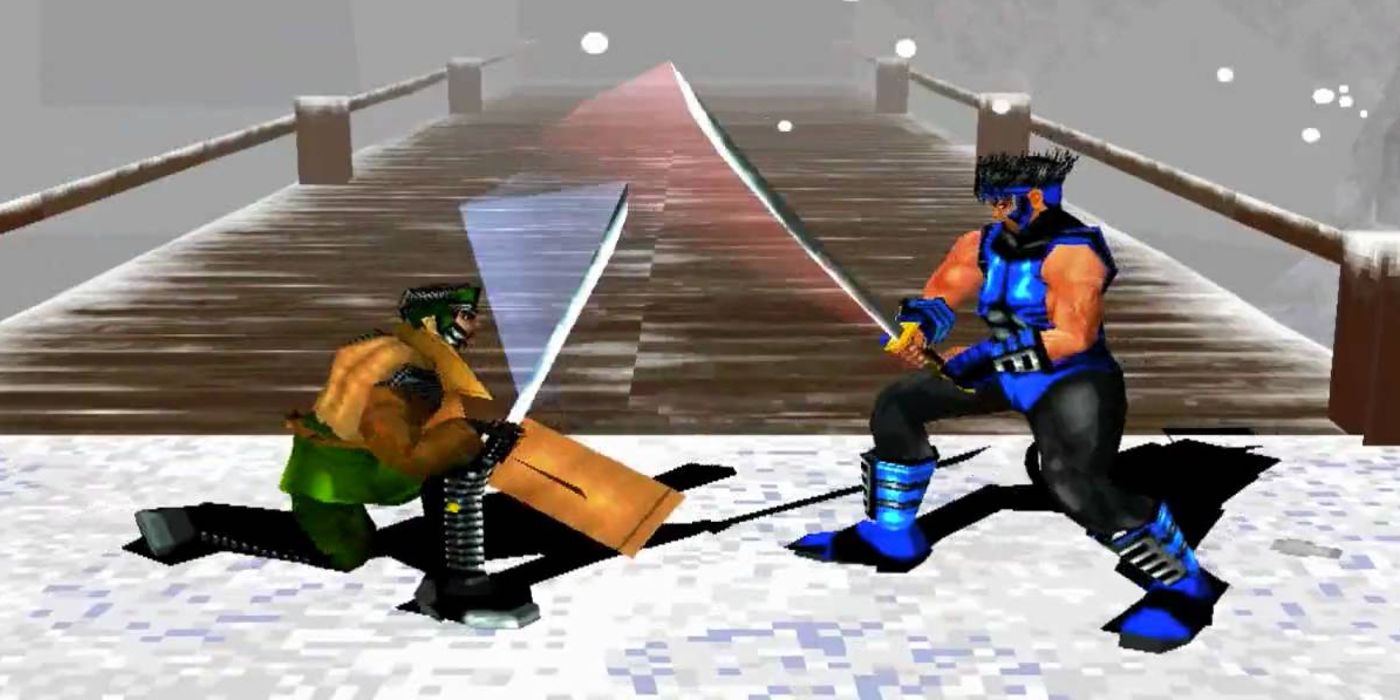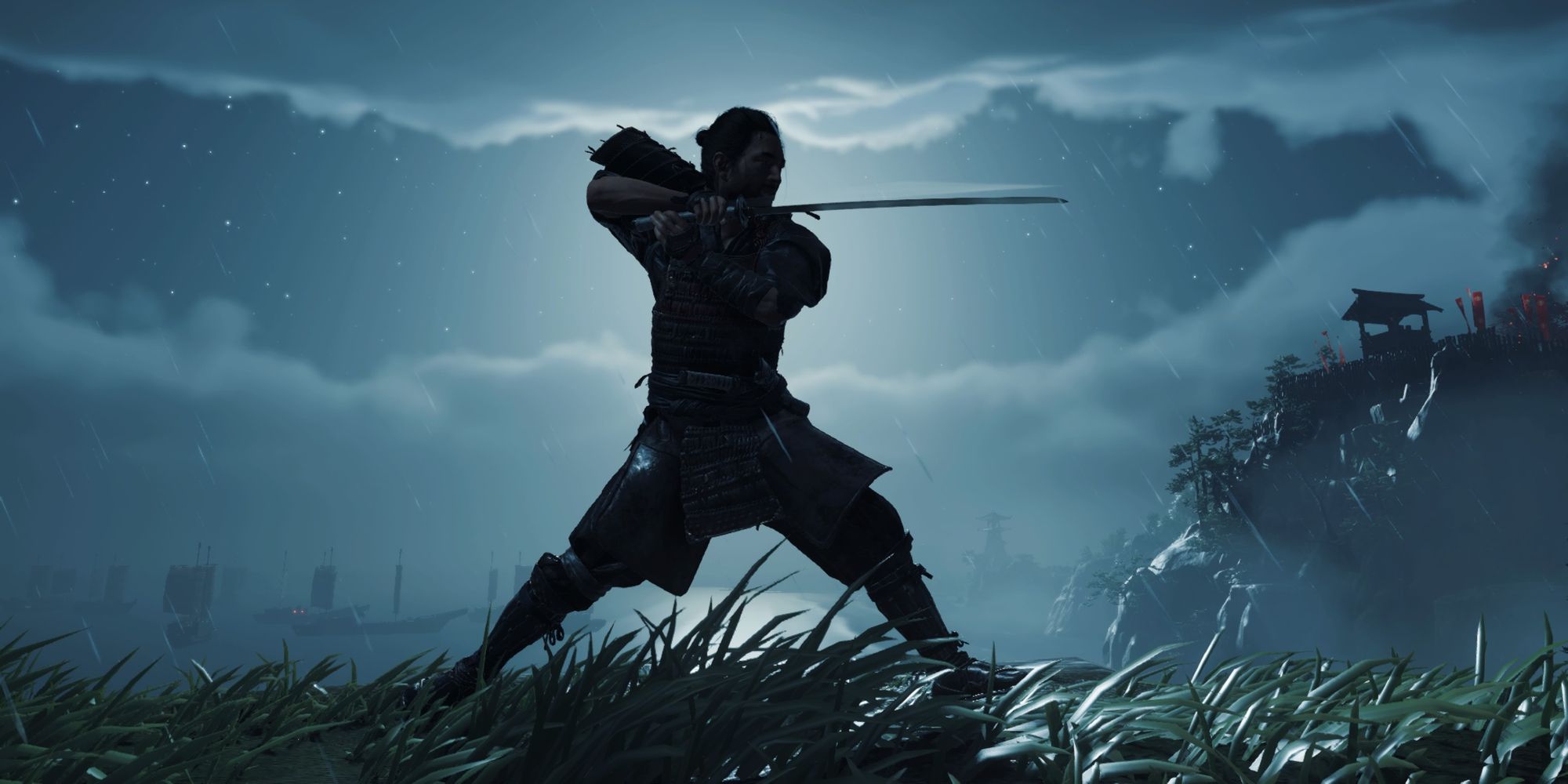Samurais are officially in again. The reception for Ghost of Tsushima has been astounding, and it's broken sales record for the fastest-selling first-party IP debut on PS4. Additionally, games like Nioh 2 and Sekiro: Shadows Die Twice were also met with positive fan fair and sold relatively well. Keeping the trend going, it's only logical that the one-on-one classic samurai fighting game Bushido Blade makes a comeback. Initially released on the PS1 in 1997, Bushido Blade was followed by a sequel and a spiritual successor franchise known as Kengo. Although Bushido Blade was met with great reviews, the Kengo series spanning four games was met with middling critical reception, with only the original and the fourth game, Kengo: Legend of the Nine releasing in North America. After the success of three new samurai IP's, it's time to bring the classic title back for a resurgence.
Some of the most riveting parts of Ghost of Tsushima are the stand-offs. In Bushido Blade, the entire game is one big standoff after another. One of the deepest systems in a fighting game of its era, Bushido Blade broke the mold of traditional fighting games by eliminating the time limit and health gauge. Instead, most attacks result in an automatic kill or damage an opponent's body parts, crippling them for the duration of the fight. The game's Body Damage System allows players to cut through an opponent's limbs, and disable them to the point where the enemy has to crawl to finish the fight. Like Ghost of Tsushima, the high-stakes battles evoke adrenaline rarely seen in other video games and provide a cinematic experience.
Over 20 years have passed since Bushido Blade initially released, and no game or sequel has matched the uniqueness or level of quality found in the original title. With next-generation technology, the series could make a triumphant return by emulating what made the original great and boasting some flashy new graphics. The series could even include recently famous samurai protagonists like Jin Sakai or Sekiro the Wolf.
Bushido Blade Meets Next-Gen
Ghost of Tsushima's combat excels with the execution of different stances. Different stances allow for the use of different attacks and can be used in certain scenarios to give the advantage against certain enemies. In Bushido Blade, the system plays slightly similarly. The three stances are high, medium, and low, and allow for attacks on different body parts. Blocking is automatically enabled, so the players are only really left open in the middle of an attack. This slow-paced, realistic approach to combat is something that hasn't been emulated since — unless the comical one-hit fighting game Dive Kick counts. A new title could bring more unique stances to the game, similar to Ghost of Tsushima, and can include different stances for types of weapons. The original game was not limited to just swords, as a sledgehammer and naginata are available options. This list could be expanded upon with the inclusion of new weapons like a kyoketsu-shoge (a long chain with a knife at the end), or a sai.
Every second in Bushido Blade can be compared to the heated scenario in a fighting game where the character is one hit away from dying. Attacks have to be perfectly calculated, movements have to be read precisely, and the stakes are always at an all-time high. Traditional fighting games are commonly accompanied by a high level of hype, but nothing matches the moment where a fighter comes back with only a sliver of health left. This is every moment in a game like Bushido Blade. A new iteration of the title has the potential to fully expand on the combat system from the original. Bushido Blade had players fighting in 3D environments that they could run, jump and climb through. A new iteration can provide more precise controls, and arenas would increase in size and allow for more exploration.
If Bushido Blade were to be remade or reimagined for next-gen consoles, it would be best to stick to the ideology present in the original games. Sequels introduced unnecessary mechanics like guns and sloppy controls. A new entry would need to keep the precise, slow-paced system that discourages button mashing and combos. In an era where samurai games like Ghost of Tsushima are topping the best-sellers list, the fighting game community would greatly benefit from a new realistic samurai fighting game.


